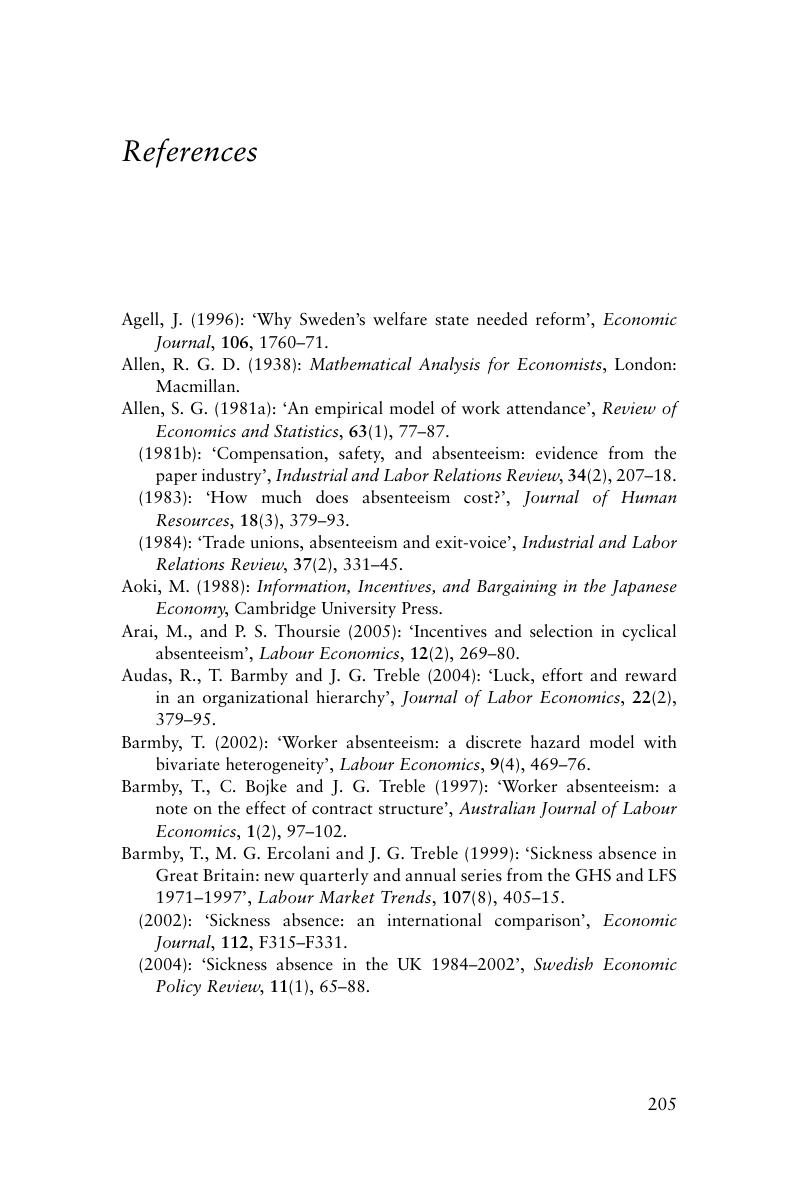Book contents
- Frontmatter
- Contents
- List of figures
- List of tables
- Preface
- 1 Introduction
- 2 The supply of absence and the provision of sick pay
- 3 The demand for absence
- 4 The markets for absence and for sick pay
- 5 A brief introduction to identification
- 6 The market for absence: empirical evidence
- 7 The demand for absence: empirical evidence
- 8 Policy implications for firms
- 9 Policy implications for states
- 10 Conclusion
- References
- Index
- References
References
Published online by Cambridge University Press: 05 August 2011
- Frontmatter
- Contents
- List of figures
- List of tables
- Preface
- 1 Introduction
- 2 The supply of absence and the provision of sick pay
- 3 The demand for absence
- 4 The markets for absence and for sick pay
- 5 A brief introduction to identification
- 6 The market for absence: empirical evidence
- 7 The demand for absence: empirical evidence
- 8 Policy implications for firms
- 9 Policy implications for states
- 10 Conclusion
- References
- Index
- References
Summary

- Type
- Chapter
- Information
- Worker Absenteeism and Sick Pay , pp. 205 - 214Publisher: Cambridge University PressPrint publication year: 2011



